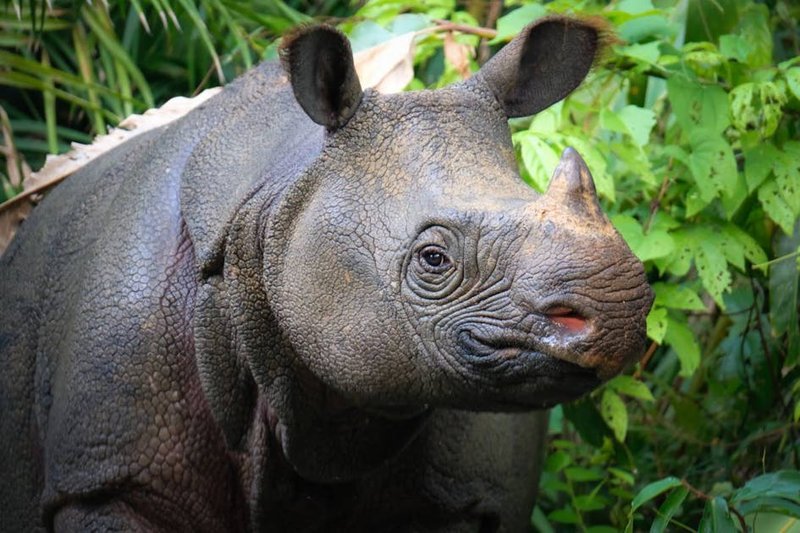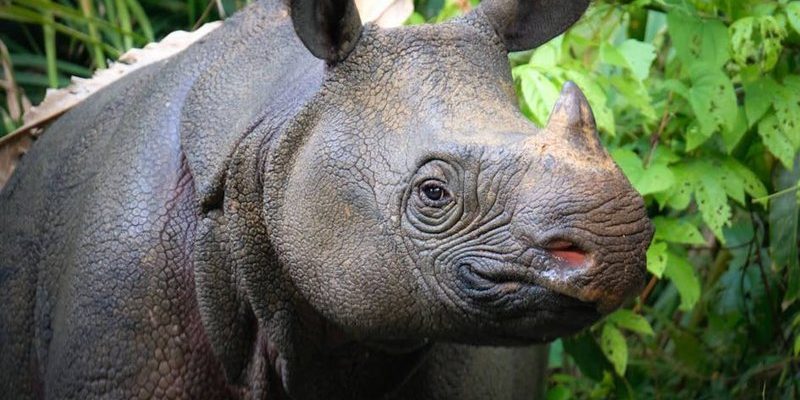
Understanding the Javan rhinoceros isn’t just about what they eat; it’s also about their behavior and how they’ve adapted to survive. Picture someone who’s become a master at navigating a local farmer’s market—knowing all the best stalls and what’s in season. Similarly, these rhinos have developed keen strategies to make the most of their environment, ensuring they thrive despite the challenges they face.
What Do Javan Rhinoceroses Eat?
The Javan rhinoceros is primarily a herbivore, which means their diet consists of plant material. They are quite selective eaters, focusing on a variety of vegetation that suits their needs. You might be wondering, what does that actually look like?
- Leaves: Javan rhinos enjoy munching on leaves from bushes and trees. They tend to favor young, tender leaves that are easier to digest.
- Fruits: Occasionally, they’ll snack on fruits that are available during certain seasons, providing them with a burst of nutrients and energy.
- Grasses: While not their primary food source, they do graze on grass, especially in areas where it’s abundant.
- Ripe Vegetation: They also consume freshly sprouted plants, which are rich in vitamins and minerals.
Their diet is not only important for their health but also plays a significant role in the ecosystem. By feeding on certain plants, they help control vegetation growth, which can influence the types of plants that thrive in their habitat.
How Do Javan Rhinoceroses Hunt for Food?
Now, you might be thinking, “Wait, but they’re herbivores—how do they hunt?” That’s a great point! The term “hunting” here can be a bit misleading. Instead of hunting in the traditional sense, Javan rhinos are foragers, skillfully seeking out the best food sources in their environment.
Their foraging strategy can be compared to someone wandering through a buffet. They take their time and choose what they want based on what looks appealing. Javan rhinos often follow well-trodden paths in the forest, moving from one feeding ground to another each day. By doing this, they minimize their energy expenditure while ensuring they have access to all the nutritious plants on their menu.
Seasonal Diet Variations
Like many animals, the Javan rhinoceros has a diet that can change with the seasons. During the rainy season, when plant life is flourishing, they may enjoy a wider variety of foliage. Conversely, in the dry season, they might need to venture farther to find food.
During these lean months, they can rely on their keen sense of smell to locate water sources and patches of green. Imagine how refreshing it is to find your favorite food in a time of scarcity—this is what the rhino experiences as they navigate their changing environment.
Feeding Habits and Their Impact on the Ecosystem
As Javan rhinoceroses forage, they do more than just fill their bellies. Their feeding habits have a profound impact on their ecosystem. By consuming large amounts of foliage, they help maintain the balance between various plant species.
Let’s say you have a beautiful garden; if one type of plant overgrows, it can choke out others. The same idea applies in the wild. When rhinos graze, they’re helping to ensure a variety of plants can thrive, creating a richer habitat for other creatures.
Moreover, their waste plays a crucial role, too. When Javan rhinoceroses defecate, they fertilize the soil, promoting the growth of new plants. It’s a wonderful cycle of life that showcases the interconnectedness of all species.
Javan Rhinoceros Hunting and Threats to Their Food Sources
While the Javan rhinoceros has developed some fantastic foraging strategies, they face significant threats that can impact not just their food sources but their survival as a species. Habitat destruction due to human activities, such as agriculture and urbanization, has drastically reduced their natural environment.
Moreover, poaching has been a significant issue. The demand for rhino horns has led to illegal hunting, which reduces their population and disrupts their feeding habits. Imagine the impact of losing an entire buffet restaurant—it’s not just one meal that’s lost, but a whole range of dining options for everyone involved.
Conservation Efforts and Their Importance
Conservation efforts are essential in protecting the Javan rhinoceros and ensuring its survival. These initiatives often focus on habitat preservation, anti-poaching measures, and education to raise awareness about the importance of protecting these incredible creatures.
Organizations are working tirelessly to create sanctuaries that offer safe, natural spaces where Javan rhinoceroses can roam freely and feed without the threat of human interference. Think of it as opening a new, protected food paradise just for them!
Why does this matter? Well, by saving the Javan rhino, we’re also preserving the richness of their ecosystem. Keeping them in the wild means maintaining the balance of plant life and supporting other species that share their habitat.
So, the next time you think about the Javan rhinoceros, remember that they’re not just a massive, intimidating animal. They have a delicate role in their ecosystem, a carefully curated diet, and unique foraging strategies that keep them thriving.
Understanding their diet and hunting (or foraging) strategies gives us better insight into their lives and helps us appreciate their place in the world. By supporting conservation efforts, we can help ensure that these magnificent creatures continue to roam the forests of Java for generations to come. They’re more than just a fascinating study in nature; they’re a vital part of the tapestry of life that sustains our planet.

